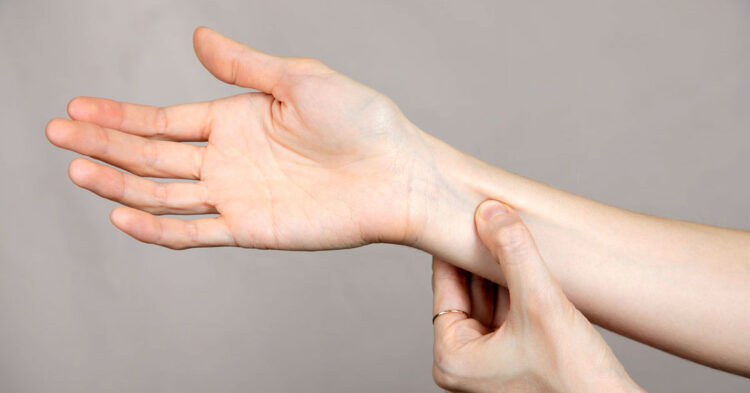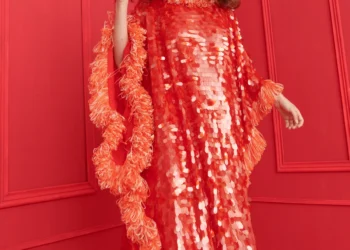Acupressure is an ancient method where you apply pressure to key points on the body to release muscular tension and stimulate the circulation of blood.

Trips to the spa and appointments for self care are still a couple of months away, yet. So we asked acupuncturist and herbalist Amanda Nordell about a technique we can all do at home to relieve stress, ease muscular tension and enhance overall wellbeing. Acupressure is the method of applying pressure with the fingertips to key points on the body to stimulate different responses. As an acupuncturist, Amanda regularly shows her clients how they can activate the points themselves using acupressure for top up treatments at home.
Here, she shares which points you can try at home and how it all works. For more information, see amandanordell.com. Please note, some points should not be used during pregnancy (outlined below).
What is acupressure and how does it work?
Acupressure is an ancient healing method and part of traditional Chinese medicine. The fingers are used to gradually press key acupressure points or healing points along the surface of the body to stimulate the body’s natural ability to heal itself. Acupressure can release muscular tension, stimulate the circulation of blood and enhance the body’s ‘qi’, the life force energy.
It is ideal for self-treatment and can contribute to preventing disease by boosting the immune system. It helps relieve stress and can promote an overall sense of wellbeing. As an acupuncturist, I use needles to activate the acupuncture points but I regularly show my clients how to activate the points themselves using acupressure.
How do you do acupressure?
- Locate the acupressure point.
- Use deep firm sustained pressure (optimally for 3 minutes) to activate the point.
- Take the opportunity to get comfortable, try to relax while working on the points , close your eyes and breathe deeply.
What are some common acupressure points for at-home use?
There are hundreds of acupressure points on the body. The ones I have chosen are reasonably easy to activate and cover some of the common conditions people may be experiencing during this ‘stay at home’ time.
Stomach (Zu San Li)
This point is a hand length below the knee on the outer aspect of the leg just off the tibial bone. It’s very good for supporting immunity, strength and longevity. In Chinese medicine this point has the nickname ‘chicken soup’ – because we always include it for people who have coughs and colds, or immune systems that aren’t working optimally.

Yintang
This point is found on the face, located on the midpoint between the eyebrows. It can help to calm the mind and promote relaxation so it’s very good for stress and for headaches, sinusitis and rhinitis. It’s great for hay fever season!

Kidney 1 (Yonquan)
This point is found on the sole of the foot in the slight depression you’ll feel when the foot is pointed downward. It’s a really nice point if you need to feel calm. It can help with sleep and anxiety as well as lightheadedness and menopausal hot flushes.

GB 21 (Jian Jing)
This point is located by pinching the shoulder muscle with your thumb and forefinger, massage for stress relief, neck and shoulder pain and for headaches.
It’s easy to access this point yourself but much nicer if someone can do it for you. Not suitable for pregnant women.

GB 8 (Shuaigu)
This point is located about an inch above the apex (highest point) of the ear. It’s very helpful for helping relieve headaches and migraines. Also known as the hangover point as it can help with over indulgence of alcohol.

Ren 17 (Shanzhong)
This point is located on the sternum (breast bone) between the breasts and is very helpful for palpitations, anxiety, overwhelming emotions, asthma, heartburn and acid reflux.

Li 4 (Hegu)
This point can be found on the hand, located in the highest spot of the muscle when the thumb and index finger are brought together. This point is great for headaches, toothaches, facial and neck pain and also for pain in the arm. This point shouldn’t be used during pregnancy as it can induce labour.









